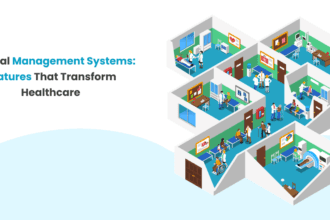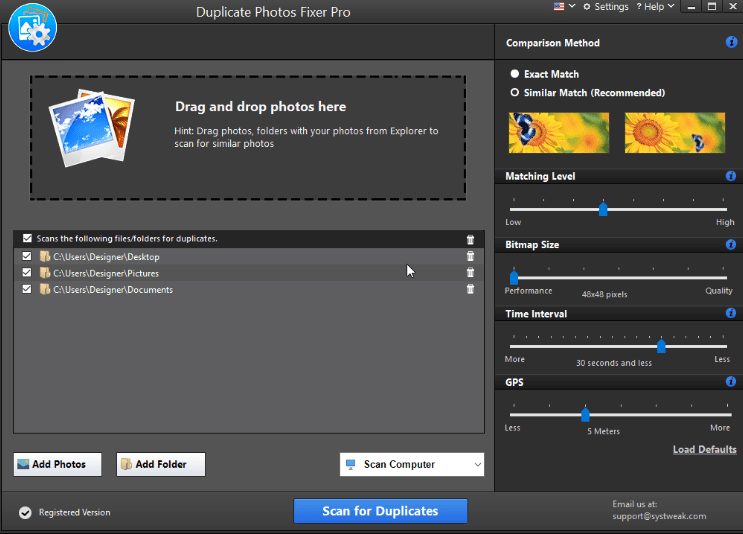
No-code tools have been revolutionizing the way business owners approach innovation. In 2025, the landscape of these platforms will continue to expand, creating even more opportunities for entrepreneurs. What was once a realm exclusive to developers is now accessible to anyone with an idea. As we move towards this future, understanding which no-code tools can propel your business to new heights is vital.
This blog post delves into the top no-code tools that can help you build real businesses in 2025. From website builders to automation software, we’ll cover a variety of tools that can fit your needs. Each tool has unique features that can streamline operations and foster creativity. Let’s explore how you can leverage these tools for maximum productivity.
Whether you are a seasoned entrepreneur or just starting your journey, these no-code solutions will help you navigate the complexities of business without relying heavily on technical expertise. Get ready to unlock your business potential with the right tools.
Understanding No-Code Tools
No-code tools are platforms that allow users to create software applications without needing to write programming code. With a focus on user experience, these tools empower business owners to create, automate, and manage processes efficiently. The appeal lies in their accessibility—people with no technical background can utilize these tools effectively. This democratization of technology is set to redefine how businesses operate.
In 2025, we can expect no-code tools to incorporate more sophisticated features, making them even more powerful for entrepreneurs. From intuitive design interfaces to robust integration capabilities, these platforms are likely to evolve rapidly. Consequently, making informed choices about which tools to adopt will become crucial for success.
Moreover, the growing trend of remote work has made no-code tools essential. Business owners can develop and manage complete systems from anywhere. Whether you need a web application or a simple landing page, no-code tools will provide the flexibility and efficiency required to adapt to changing business environments.
Top No-Code Tools for 2025
1. Webflow
Webflow is an industry-leading no-code website builder that allows users to design and launch responsive websites visually. With a focus on control, Webflow provides a unique blend of design and development capabilities.
Key features of Webflow include a powerful CMS, ecommerce capabilities, and host management options. This tool is suitable for entrepreneurs who seek to create stunning websites without delving into code. Furthermore, as no-code continues to gain traction, Webflow is expected to roll out more advanced features tailored specifically for business growth.
2. Bubble
Bubble is a powerful no-code platform designed for creating interactive, multi-user applications. Ideal for entrepreneurs looking to disrupt traditional markets, Bubble allows users to build sophisticated applications without technical knowledge.
Using a drag-and-drop interface, users can customize their applications easily. Moreover, Bubble’s integrations with various APIs and data sources mean that you can build highly functional applications tailored to your business needs. As the demand for application-based solutions increases, so will Bubble’s capabilities.
3. Zapier
Zapier is a leading automation tool that allows you to connect different apps and automate workflows between them. This tool can save countless hours by reducing manual tasks in your business processes. Imagine setting up triggers that automatically send data from one application to another without needing to lift a finger.
Zaps (automated workflows created in Zapier) can streamline critical functions such as customer notifications, lead generation, and data tracking. As more businesses adopt automated solutions, the importance of Zapier in enhancing operational efficiency is undeniable.
4. Airtable
Airtable acts as a cross between a spreadsheet and a database, providing an easily navigable platform for managing business data. In 2025 and beyond, its capabilities in project management, customer relationship management (CRM), and data collection will prove invaluable to business owners.
This highly adaptable tool allows teams to customize their databases, maintain records, and share data effortlessly. The ability to create custom views and integrate with other tools using APIs makes Airtable an essential no-code solution for growing businesses.
5. Glide
Glide simplifies app creation by enabling users to convert Google Sheets into powerful mobile applications. This innovative approach is perfect for those who may not have extensive programming experience but wish to leverage mobile technology.
As mobile applications continue to dominate the business landscape, Glide offers a straightforward solution to develop apps quickly. With enhanced features expected in the future, such as advanced analytics and integration options, Glide is positioned to remain a key player in the no-code space.
Benefits of No-Code Tools
Choosing to adopt no-code tools comes with several benefits for business owners. Firstly, these platforms drastically reduce the time and complexity typically associated with software development. This efficiency enables quicker responses to market needs, which is crucial for maintaining competitiveness—especially in fast-evolving areas like talent acquisition, where launching an AI Interview Platform swiftly can provide a major edge.
Secondly, no-code tools significantly lower the barrier to entry for entrepreneurship. Individuals from various backgrounds can build and launch applications or websites without needing a technical background. This has led to an increase in diverse startup ideas across various sectors.
Cost-Effectiveness
Another significant advantage of no-code tools is cost savings. Traditional development often involves hiring a team of developers, which can be prohibitively expensive for startups. No-code solutions eliminate this necessity, enabling businesses to allocate resources to other critical areas, such as marketing or product development.
Additionally, many no-code platforms offer tiered pricing structures based on the features desired, making them accessible to businesses at various growth stages. This flexibility fosters a more sustainable growth trajectory, enabling businesses to scale as needed.
User Empowerment
No-code solutions empower users by providing them with control over the development process. Business owners can create, modify, and iterate on their projects without being dependent on IT. This independence fosters innovation and helps businesses respond quickly to emerging market trends.
Moreover, with a direct link to the creation process, business owners can better understand their product and make decisions based on real-time data. Having access to create their own tools will enable entrepreneurs to bring their visions to life more accurately.
Challenges of No-Code Tools
While there are many advantages to using no-code tools, there are also challenges to consider. One significant concern is the limitations of customization. Although many no-code platforms provide a range of templates and functionalities, they may not satisfy specialized business needs. As your business scales, these limitations can become a hurdle.
Furthermore, there is the concern of scalability. Relying entirely on no-code solutions might hinder your capacity to adapt your application as needs evolve. Some platforms may not support heavy traffic or advanced functionalities, which can pose issues as your business grows.
Data Security
Data security is another critical issue for no-code platforms. When using third-party tools, the responsibility of securing customer data often rests with the provider. Business owners must carefully vet these platforms and ensure that they adhere to data protection regulations.
Data breaches can severely damage a business’s reputation and result in legal repercussions. Therefore, it is vital to consider the security measures taken by any no-code tool before implementation.
Integrations and Compatibility
The process of integrating no-code tools with existing software can be challenging. In many cases, incompatible systems may lead to disruptions and inefficiencies. Business owners must assess compatibility when selecting no-code tools to ensure they work well with other platforms already in use.
Additionally, relying on various no-code tools for different functions may complicate workflows. It is essential to implement a cohesive strategy that seamlessly connects all tools involved in your processes.
Future Trends in No-Code Tools
The landscape of no-code tools is constantly evolving. As we approach 2025, several trends are expected to shape the market. One of these trends is the growing integration of artificial intelligence (AI) within no-code platforms. AI features will enable users to implement data-driven solutions more effectively, allowing for greater customization and enhanced decision-making capabilities.
Furthermore, no-code tools are anticipated to embrace collaboration features that promote teamwork among users. Real-time collaboration capabilities will help teams work together, regardless of their physical location. Such advancements will further empower business owners and their teams to innovate collectively.
Expansion of Use Cases
As no-code tools become more sophisticated, the range of use cases will expand dramatically. Industries previously untouched by no-code development will begin to adopt these platforms. This trend allows for diverse sectors, such as healthcare and finance, to simplify processes and enhance service delivery.
Expect to see more industry-specific no-code solutions emerge, catering to the unique needs of various sectors. This expansion will provide untapped opportunities for creativity and innovation among business owners. No-code solutions will pave the way for new business models and product offerings.
Focus on User Experience
As competition grows in the no-code space, a strong emphasis on user experience (UX) will play a significant role in the development of tools. Enhanced interfaces and intuitive designs will become standard as platforms strive to offer seamless experiences for their users. Understanding user pain points and iterating on functionality will be key in creating successful tools.
In the future, expect no-code platforms to offer personalized experiences and adaptive learning features that bring a tailored approach to users’ needs. This focus on user experience will enhance customer satisfaction and encourage more extensive adoption across different demographics.
Empowering Entrepreneurs: The No-Code Revolution
As we look ahead to 2025, the impact of no-code tools on entrepreneurship cannot be overstated. These platforms have made significant strides in democratizing technology, providing business owners with the opportunity to innovate without limitations. The landscape of business creation is evolving, and those who harness no-code tools effectively will lead the charge.
By removing barriers to entry and streamlining processes, no-code tools empower entrepreneurs to focus on what truly matters—growing their businesses. The future of business is likely to be defined by agility, creativity, and the ability to pivot quickly, and no-code tools play a significant role in achieving this.
In conclusion, the no-code revolution offers exciting possibilities for the future of entrepreneurship. Business owners should embrace these tools, fueling their creativity and unlocking their potential. With the right no-code tools, you can transform your business idea into reality and thrive in the digital landscape.
Author Bio :- Arjun is a Business Growth Strategist at a Leading Software Development Company. Apart from working on a long-lasting relationship with customers and boosting business revenue, I am also interested in sharing my knowledge on various technologies through successful blog posts and article writing.








